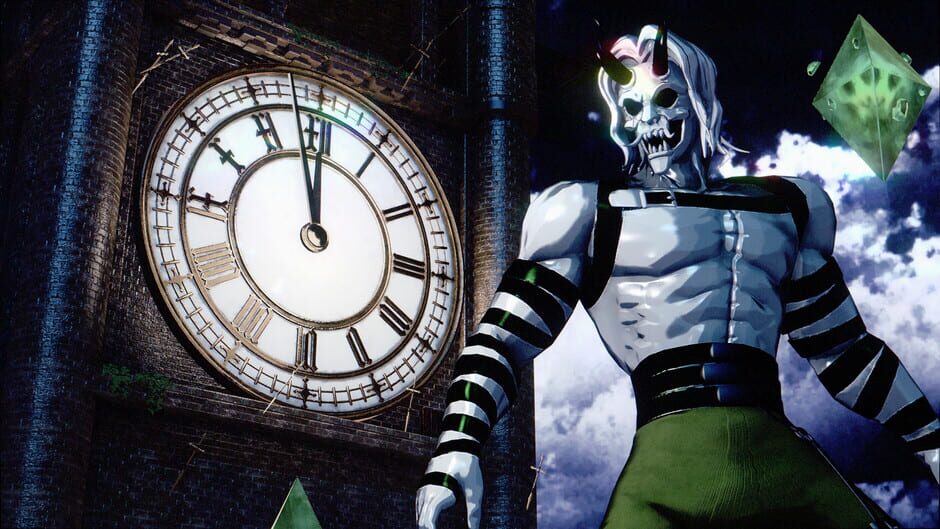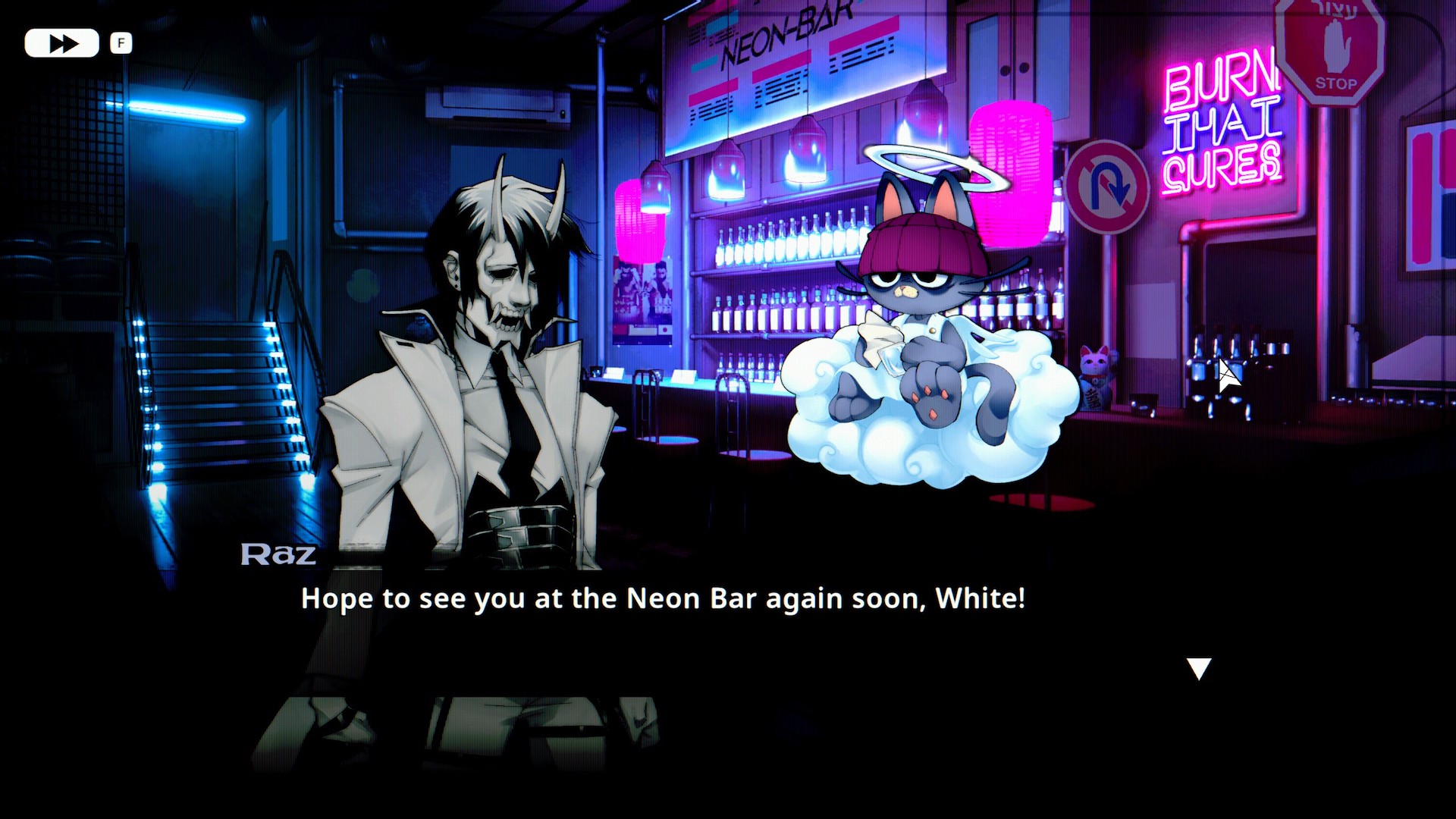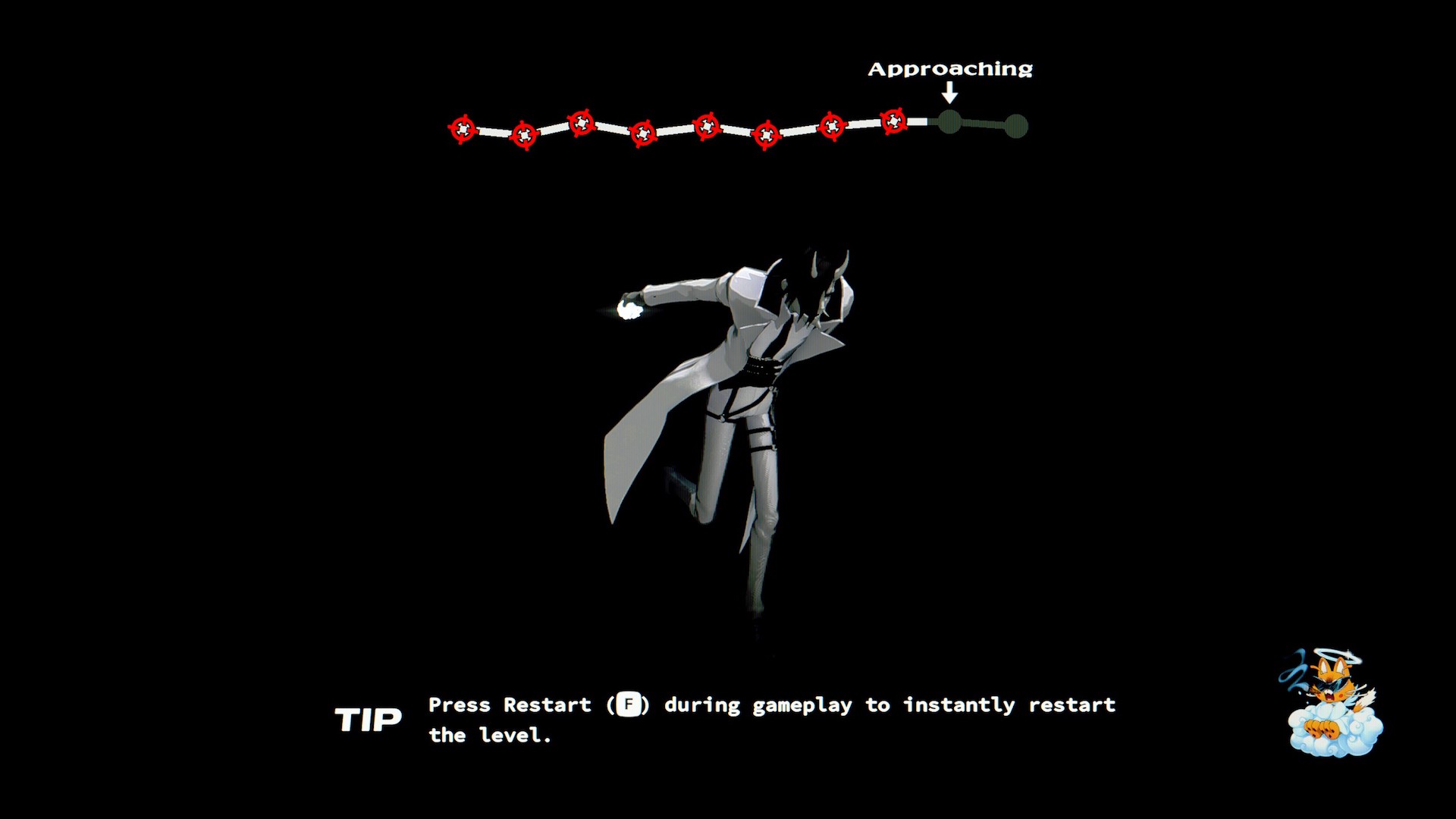Neon White is the best game that’s not for everyone
This could be the freak-friendly future of the FPS genre

What do you hear when I write ‘Aim for the heavens!’? If you hear a pitched-up, inspirational voice in your head, then you’re a freak. A freak with taste, that is. It means you’re a fan of Neon White, the self-identified “for freaks, by freaks” level-based speedrunning FPS from Angel Matrix.
Destined to be a cult classic, Neon White launched earlier this year and is now embellishing (in immaculate style) the GOTY lists of our industry’s outlets. Or if it isn’t, I will grit my teeth and tell you that’s. As much as it pains me to say it, it’s certainly not for everyone… and that’s ok, I guess.
Neon White is a lightning-paced, and at high levels, hyper-technical movement shooter, with overtly anime characters, underground aesthetics and a hardcore kitbash soundtrack. If you get it, you really get it, but I’ve just listed five reasons why players could give it the old Simon Cowell. Even Game Director Ben Esposito agrees.
Changing tastes to a changing industry

“Conventional wisdom says when you mix two genres with two different audiences, your art doesn’t attract both audiences, it only attracts the people who are in both,” they said. “So Neon White doesn’t have the broadest appeal, but that was part of the project from the beginning. It’s not meant for everyone, just the freaks who love media that’s weird, unhinged, and 100% true to itself. Or if you ever played CS Surf maps while watching Toonami.”
Neon White felt like a targeted ad for me. It’s quick, beautiful and constantly exciting — great for subculture sleuths in an attention economy. It shares DNA with a few select series, like Kingdom Hearts, Sonic Adventure and Jet Set Radio. These are games that feel like pocket dimensions of culture, with audio-visual motifs so specific and influential that they keep cropping up in burgeoning artistic communities. Even years after release, they feel like the future. “I just call it the “it” factor. It’s hard to pin down,” Esposito said. “It’s something that’s forward-thinking, but also nostalgic. Something that’s internally consistent, but doesn’t feel like a foregone conclusion. It’s the result of someone with a specific taste trying to achieve a specific goal. That’s why you can’t get it by copying something that already exists.”
Esposito thinks Neon White’s unique appeal is also part of a larger cycle of changing tastes in a saturated industry. “Games are a lot more demanding of your time and attention now than 30 years ago,” they said. “Lifestyle games are an endless grind. Big story-based cinematic blockbusters are cheap and abundant. All of a sudden, games with a retro sensibility are starting to feel fresh. Neon White definitely has that retro sensibility, even though it doesn’t have a lo-fi aesthetic.”
Instead of leaning too hard on the past, Neon White pushes into the future as it juggles its inspirations, such as the celestial vistas of El Shaddai: Ascension of the Metatron. Crystal oceans and deep blue skies frame your fights to the finish line, with Santorini architecture truncating the landscape, carefully suggesting new pathways and secret spots. “Clarity was our most important pillar,” Esposito said. “It influenced both the art style and every layout in the game. Negative space was a key tool for guiding players around, so we used the wide-open expanses of clouds and water to our advantage as much as possible. It makes the levels feel more gamey, empty and abstract, but it fits nicely with the game’s setting.”
Sign up for breaking news, reviews, opinion, top tech deals, and more.
A world-record in neon

One particularly ‘retro’ part of the game is in how it feels. As you sacrifice your Soul Cards to pop demons and breach finish lines, Neon White evokes the sticky friction of moving around in Source Engine custom maps. If you’ve surfed in Counter-Strike: Source or bunny-hopped in Garry’s Mod, you’ll know what I mean.
“There is a rigidity to Source Engine movement that makes it feel clean and precise,” Esposito said. “We wanted to recreate that ‘industrial’ feel, and part of that is having no squishy movement. By squishy I mean automated features like clambering up ledges or animation-driven parkour. Those features make you feel like you’re driving a character with weight and heft. Surfing in Counter-Strike: Source by contrast is a uniquely disembodied experience, and it’s mesmerizing. Our rule for the movement was to be precise over everything else. 100% air control, floaty jumps, and fast acceleration on the ground,” they continued. “Some players don’t like it at first because it doesn’t feel fast. That’s by design, though. The game shouldn’t make you feel fast. It should teach you to go fast.”
Clearly, this approach worked, as Neon White has attracted a community of talented speedrunners. One of which is Blaidan, who, at the time of writing, held the hotly-contested world record for the Level Rush category, beating every main story level in a single run in just under 31 minutes.
Blaidan was first drawn to Neon White by its demo — they started swapping times with friends due to the robust leaderboard system. A history with Source Engine games helped too. “I’ve done CS surfing, bunnyhopping, messed around in Portal 2 a bit, and am also a top runner in Titanfall 2, which uses a modified version of the Source Engine,” they said. “The biggest relation I can draw between the two is the “snappiness” of player movement. The player is capable of switching directions on a dime and also has very high control in the air.”
As you fly through its moreish clusters of levels, Neon White’s thrilling sense of flow is persistent, which is why it’s such an easy fit for speedrunners. “It demands your attention, but doesn’t hold it for longer than a brief moment, which I believe is a good balance,” Blaidan said. “Traditionally, boss fights take place in a single arena. In Neon White, the level is the arena.”

Due to Neon White’s segmented nature, there haven’t been any record-shattering timesaves. It’s more of a grassroots campaign from community members to find the fastest individual routes, which causes a steady incline of improvements. This works perfectly with Angel Matrix’s hands-off approach to the game’s mechanics. “In one of the first few levels of the game, there's a collectible that seems way too high to reach; a regular jump doesn't even come close. Then you get this eureka moment of, ‘OH! I can use the bomb to boost myself up’ and it's just so satisfying once you figure it out,” Blaidan explains. “It goes even deeper than that too. On another level shortly after, the fastest route involves using two bomb boosts at the same time. That's when you find out that the bomb boosts can actually stack. Within the first chapter, the game shows not only that it has hidden mechanics, but that they can build on top of each other to do something even greater,” they continued.
Blaidan’s first world record grab was a groundbreaking moment. They jumped from third-place with 33:31 to become the first player to achieve a time under 32 minutes. “Leading up to this point, the two players ranked above me, Humps and Azorae, were constantly beating the record which kept shifting the goal post for me,” Blaidan said. “So, finally catching up to them was really assuring of my capabilities.”
But even Blaidan isn’t sure about Neon White’s refraction of the genre going mainstream. ”I’d definitely love to see more and more speedrun style games be released, don’t get me wrong,” they said. “However, there is still a lot of value in having simple and intuitive control schemes. I imagine most casual players don’t want to have to learn a set of intricate techniques in order to feel like they can play the game how the developers envisioned. And that’s totally valid. I believe speedrunning mechanics have a place in the future of FPS games, but it will not be all-encompassing.”
Whether it spawns a new wave of niche games or not, Neon’s White manifesto for the future of first-person shooters is compelling, and hopefully influential. We need more games with such inspired specificity baked into their game design, to outweigh all the dollar-eyed copycats trying to cast the widest net possible. Esposito doesn’t have any plans to expand the world of Neon White at present, and fair enough, after proving such a difficult point. “We achieved what we set out to do with Neon White, but there’s definitely more potential there. So we’ll see.”

Jordan Oloman is a journalist and documentarian with experience across the pop culture/tech spectrum writing reported features, reviews. news, guides, op-eds and more for a wide variety of outlets. He is also an affiliate streamer on Twitch and have previous experience in scriptwriting, podcasting, game consultation and creating video content.